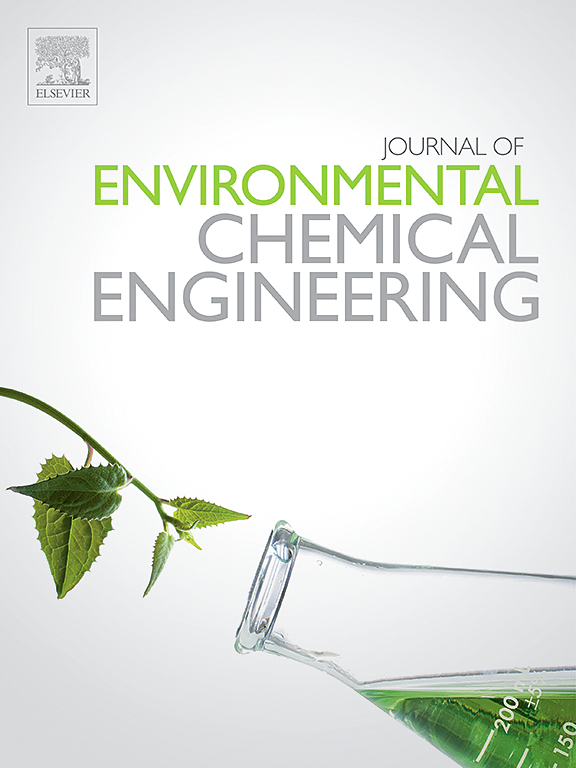原位NADH再生耦合酶促CO2还原:从基本概念到最新进展
IF 7.4
2区 工程技术
Q1 ENGINEERING, CHEMICAL
引用次数: 0
摘要
利用酶进行生物催化CO2还原是利用CO2生产高选择性碳氢化合物燃料的最有效方法之一。许多这些酶在化学计量上依赖于NADH辅助因子来提供必要的还原等效物。然而,高成本和对辅助因子的大量需求阻碍了该方法的工业可行性。NADH再生允许在催化浓度下NADH的再循环,从而消除了化学计量要求。因此,生物催化CO2还原应被视为涉及NADH再生单元和酶促CO2还原单元的两部分合作过程。这篇综述概述了NADH再生和二氧化碳减少的概念和机制。第一部分综述了NADH再生的各种方法及相关研究。第二部分介绍了酶促二氧化碳还原的基本概念,随后回顾了二氧化碳还原与NADH再生的研究。这包括对单酶和多酶级联系统的回顾,主要用于生产三种产品:甲酸盐、甲醛和甲醇。各种策略,以最大限度地发挥两个单位之间的协同作用,并保持其稳定性,如区隔化,固定化和封装多个反应伙伴,进行了检查。最后,讨论了受自然启发的人工光合系统。这些系统通过二氧化碳的减少(碳源)和水的分解(电子源)促进太阳能转化为燃料。本文综述了生物催化CO2减排领域的进展和挑战,特别是在混合辅因子利用系统方面。本文章由计算机程序翻译,如有差异,请以英文原文为准。
In situ NADH regeneration coupled to enzymatic CO2 reduction: From fundamental concepts to recent advances
Biocatalytic CO2 reduction using enzymes is among the most effective methods for producing hydrocarbon fuels from CO2 with high selectivity. Many of these enzymes rely stoichiometrically on the NADH cofactor to provide the necessary reducing equivalents. However, the high cost and significant demand for the cofactor hinder the industrial feasibility of this method. NADH regeneration allows for the recycling of NADH at catalytic concentrations, thereby eliminating the stoichiometric requirement. Consequently, biocatalytic CO2 reduction should be viewed as a two-part cooperative process involving an NADH regenerating unit and an enzymatic CO2 reducing unit. This comprehensive review outlines the concepts and mechanisms underlying NADH regeneration and CO2 reduction. In the first part of the review, various methods of NADH regeneration and related research are discussed. The second part addresses the basic concepts regarding enzymatic CO2 reduction, followed by a review of research on CO2 reduction coupled with NADH regeneration. This includes a review of single and multi-enzyme cascade systems for the production of primarily three products: formate, formaldehyde, and methanol. Various strategies to maximize the synergy between the two units and maintain their stability, such as compartmentalization, immobilization, and encapsulation of the multiple reaction partners, are examined. Toward the end, nature-inspired artificial photosynthetic systems are discussed. These systems facilitate the conversion of solar energy into fuels through CO2 reduction, the carbon source, and water splitting, the electron source. This review highlights the advancements and challenges in the field of biocatalyzed CO2 reduction, particularly concerning hybrid cofactor utilization systems.
求助全文
通过发布文献求助,成功后即可免费获取论文全文。
去求助
来源期刊

Journal of Environmental Chemical Engineering
Environmental Science-Pollution
CiteScore
11.40
自引率
6.50%
发文量
2017
审稿时长
27 days
期刊介绍:
The Journal of Environmental Chemical Engineering (JECE) serves as a platform for the dissemination of original and innovative research focusing on the advancement of environmentally-friendly, sustainable technologies. JECE emphasizes the transition towards a carbon-neutral circular economy and a self-sufficient bio-based economy. Topics covered include soil, water, wastewater, and air decontamination; pollution monitoring, prevention, and control; advanced analytics, sensors, impact and risk assessment methodologies in environmental chemical engineering; resource recovery (water, nutrients, materials, energy); industrial ecology; valorization of waste streams; waste management (including e-waste); climate-water-energy-food nexus; novel materials for environmental, chemical, and energy applications; sustainability and environmental safety; water digitalization, water data science, and machine learning; process integration and intensification; recent developments in green chemistry for synthesis, catalysis, and energy; and original research on contaminants of emerging concern, persistent chemicals, and priority substances, including microplastics, nanoplastics, nanomaterials, micropollutants, antimicrobial resistance genes, and emerging pathogens (viruses, bacteria, parasites) of environmental significance.
 求助内容:
求助内容: 应助结果提醒方式:
应助结果提醒方式:


